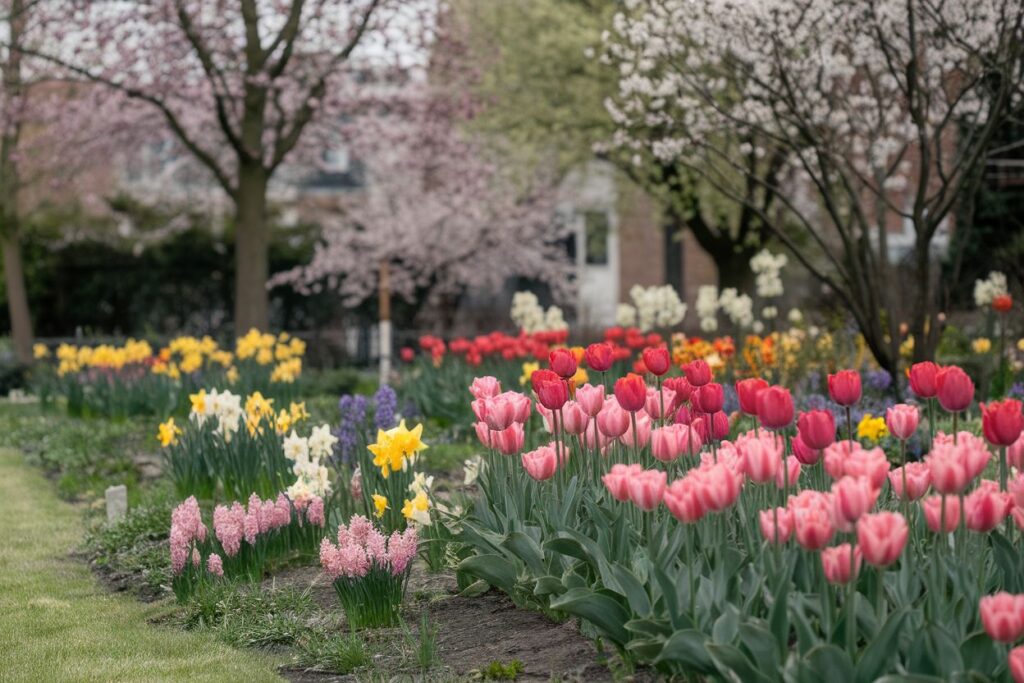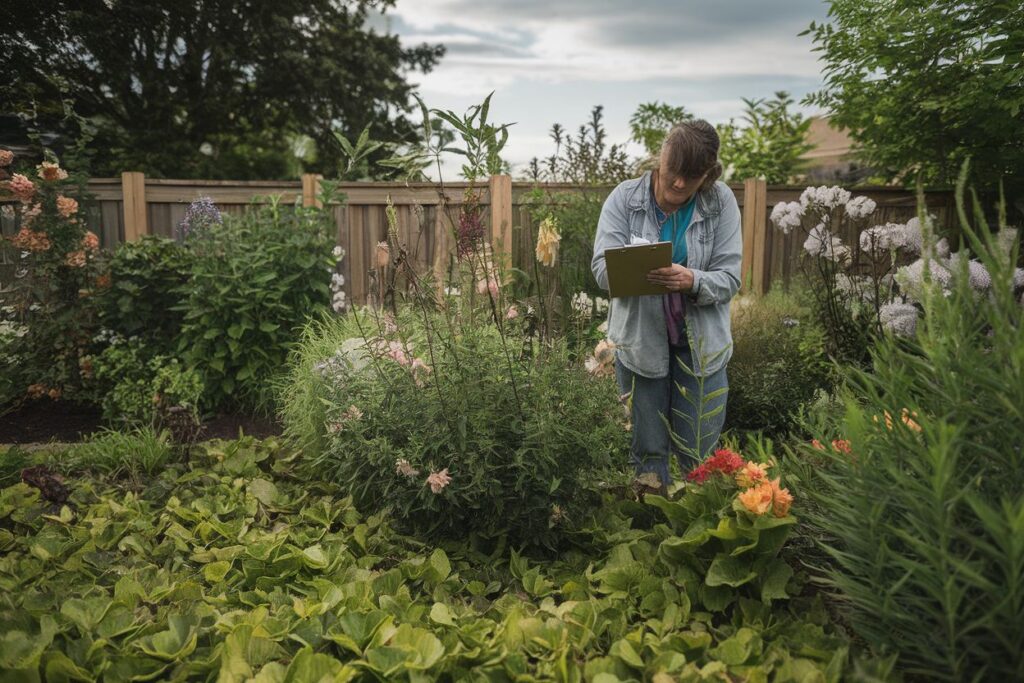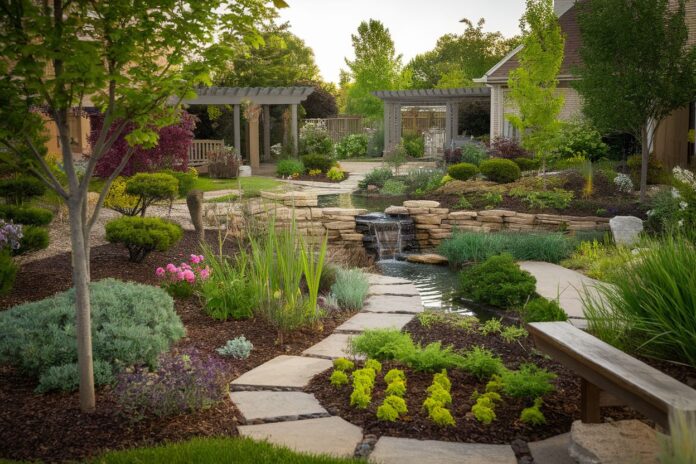Gardening seasons are key times when plants grow best. They match up with the right weather and temperature. This is when plants really flourish.
A gardening calendar is a helpful tool for gardeners in the U.S. It shows when to plant different crops. The best time to plant changes with where you are, the climate, and the weather.
Knowing when to plant helps gardeners get the most from their plants. Every area has its own seasons that affect how plants grow. This knowledge helps gardeners plan better.
Getting gardening right means understanding these natural cycles. Whether you garden for fun or as a job, knowing about gardening seasons is key. It changes how you grow plants.
Understanding the Basics of Growing Seasons
Starting a garden means knowing about growing seasons. Every garden has its own story, shaped by climate and temperature. Gardeners need to read these signs to make their plants thrive.
Climate Zones and Their Impact
USDA hardiness zones are key for choosing plants. They show which plants can handle certain temperatures. Each zone is 10 degrees different, helping gardeners pick the right plants for their area.
“Know your zone, know your garden’s potential” – Gardening Wisdom
Temperature Patterns Throughout the Year
Microclimates affect how well plants grow. Things like elevation and wind can change the temperature in a garden. Knowing these details helps gardeners place plants wisely and protect them.
Frost Dates and Growing Windows
The frost-free period is vital for gardening. Knowing the last and first frost dates helps plan planting and harvesting. These dates mark the best time for plants to grow and produce before frost hits.
Gardening season? Key Factors That Define Your Growing Period

Gardening is more than just checking the temperature. Many environmental factors come together to create the best growing conditions for plants. Day length is key in starting plant growth and flower cycles. Plants use the length of daylight to know when to grow flowers or prepare for seasonal changes.
Soil temperature is also very important for seeds to germinate and roots to grow. Each plant needs a certain soil temperature to grow well. Gardeners must watch these temperatures closely to help their plants grow. Using infrared soil thermometers can help track these exact temperatures.
“Understanding your local environmental conditions is the key to gardening success.” – Master Gardener Association
Precipitation and humidity greatly affect plant health. Water helps plants absorb nutrients, photosynthesize, and stay strong. Wind patterns also play a big role. Strong winds can harm plants, while gentle breezes help with pollination.
Local microclimates offer unique growing spots that can change a lot even in short distances. Gardeners need to know their area’s specific conditions. This includes sun exposure, wind protection, and moisture levels. By understanding these details, gardeners can create the best growing spots for their plants.
Different Types of Growing Seasons
Gardening changes with the seasons. Knowing each season’s traits helps gardeners grow more and protect their plants better.
By picking the right crops for each season, gardeners can keep their gardens busy. They use cool-season and warm-season crops for the best results. This way, they can harvest continuously.
Spring Growing Season
Spring is the best time for cool-season crops like lettuce and spinach. The weather is just right for these plants. Gardeners start seeds indoors and move them outside when it’s safe.
Summer Growing Season
Summer is for warm-season crops like tomatoes and cucumbers. These plants love the heat. Gardeners use mulch and water well to keep them safe.
Fall Growing Season
Fall brings back cool-season crops like kale and broccoli. Carrots do well too. Planting for winter can also give you food in cold months.
Winter Growing Season
Winter gardening needs careful planning. Greenhouses and row covers help keep growing. Techniques for winter help gardeners keep crops alive.
“The secret of a successful garden is adapting to each season’s unique growing conditions.” – Gardening Wisdom
Maximizing Your Garden’s Potential Year-Round

Successful gardeners don’t just plant at the right time. They use crop rotation to keep soil healthy and pests away. By moving crops around, they avoid nutrient loss and break pest cycles.
“The most resilient gardens are those that adapt and change with each growing season.” – Garden Wisdom
Companion planting is another smart way to boost your garden. Some plants keep pests off, improve soil, and increase yields. For instance, basil near tomatoes repels bugs and tastes better.
Season extension techniques like row covers and hoop houses help grow longer. They protect plants from frost and create warm spots for growing. With lightweight covers and portable greenhouses, it’s easy to keep crops safe.
Indoor gardening is great for growing when it’s cold outside. You can have a windowsill herb garden or a compact hydroponic system. LED grow lights and small gardening kits let you grow veggies and herbs in your kitchen all year.
Final Thoughts
Understanding gardening seasons changes how gardeners work. Each area has its own chance for growing food all year. This happens with careful planning and knowing how to adapt.
Good gardeners listen to their land. They watch for temperature changes, frost, and when seasons shift. This helps them pick the right plants at the right time.
Adaptive gardening lets you grow food longer and protect it better. It works in many different weather conditions. This way, you can grow more food in your garden.
Sustainable gardening is more than just growing food. It’s about making a garden that’s strong and helps both plants and people. Knowing the seasons helps you make a garden that’s productive all year.
Your garden is a living thing that changes with the seasons. With knowledge, patience, and watching closely, you can make your garden a place of endless growth. It will give you food all year.











